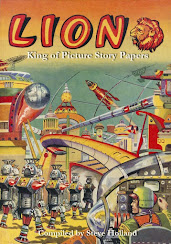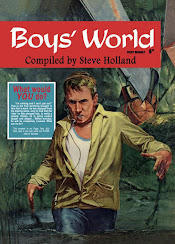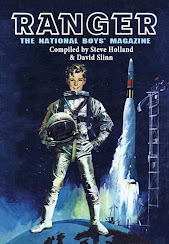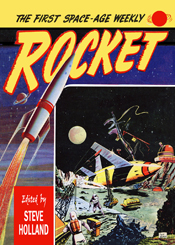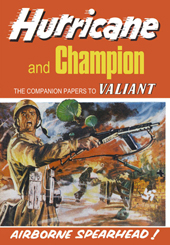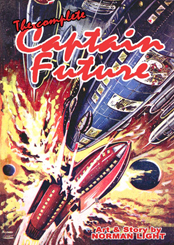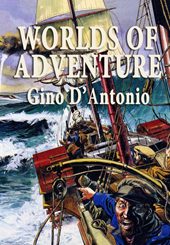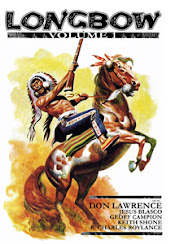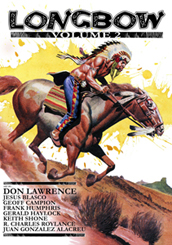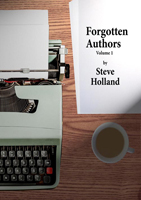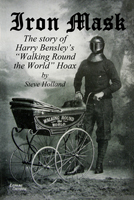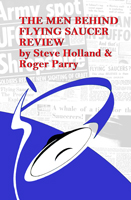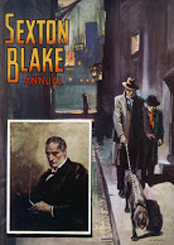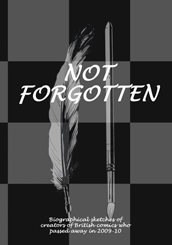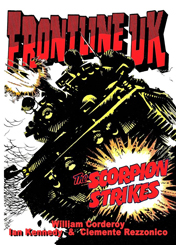John Cooper, who has died aged 72, had a career in comics that spanned five decades and dozens of characters, although it will be for two action-packed and often violent strips that he will be remembered, one the memorable precursor to ‘Judge Dredd’.
In 1975, John Wagner was appointed editor of the ailing Valiant, whose sales had fallen in line with many other comics during the turbulent early Seventies oil crisis. Cover prices had soared and Wagner was tasked with updating the comic for a modern audience. Wagner’s key creation for the relaunch was ‘One-Eyed Jack’, a tough street cop based shamelessly on Clint Eastwood’s Dirty Harry. Cooper took Eastwood as his model for the artwork and gave him Steve McQueen’s Mustang (from Bullitt) to drive. Wagner’s scripts were gritty, violent and often blackly humorous, a style of writing he would continue when he created Judge Dredd—another violent cop in an east coast American city—for 2000AD soon after.
Cooper was one of the first artists to draw the new character, but his story, ‘Mugger’s Moon’, was held back. Cooper later claimed that he had been asked to tone down the violence—his artwork arriving in the 2000AD office just as another comic, Action, was pulled from the newsstands. “They sent it back to me and said, ‘It’s too violent, John’,” Cooper said. “These muggers come after [Dredd] with guns and he just blew them all away—holes straight through them. I loved drawing that.” A toned-down version, with guns replaced with baseball bats, was eventually published in issue 19, by which time other artists (notably Mike McMahon) had established the look of Dredd and a cityscape that no longer matched Cooper’s version.
Instead, Cooper was sidelined, drawing a handful of episodes of ‘M.A.C.H.1’ and some ‘Tharg’s Future Shocks’ for 2000AD. It meant, however, that he was able to take over ‘Johnny Red’, an already popular Second World War strip in Battle Action when the strip’s original artist, Joe Colquhoun, was seconded to another strip. By the time Cooper took over, two-year veteran Colquhoun had established a look for the strip: “I had to slightly imitate his style at the beginning, but I think I just became more like him as I went along,” recalled Cooper. “I liked to do dramatic close-ups but with [Colquhoun-styled] stuff in the background—you’d have someone stood next to a big gun, someone else queuing for the toilet, then there’d be all these building and maybe a burnt-out plane.”
The story was one of Battle Action’s finest, relating how Johnny ‘Red’ Redburn found himself in charge of a Russian flying squadron, leading Falcon Squadron with a battered old Hurricane. “It was gritty, really rough and ready,” recalled Cooper. “All his crew were unshaved, dirty buggers, the planes patched to hell… Tom Tully was a brilliant writer. He was like Wagner in a way: he went for the gut, didn’t pull any punches.”
Over the next five and three-quarter years, Cooper was able to make the strip his own, eventually drawing over 1,100 pages of Johnny’s adventures spread across 303 episodes in the weekly comic, summer specials and annuals.
John Cooper was born in Featherstone, West Yorkshire, in May 1942, the son of Ernest Cooper and his wife Winifred (née Hollis). As a boy, he learned to draw by copying comics, a constant in a life spent travelling to wherever his father, a one-time bus driver, found employment as a pub landlord. After growing in in Castleford and Wakefield, the family settled in Doncaster and young John helped tend the bar whilst studying in York and at Wakefield Art College.
After working for a shopfitters in Wakefield and for Falcon Studios in Leeds, Cooper decided to go freelance after a conversation with a patron at his father’s pub. He picked a London agent, randomly choosing Billie M. Cooper because of the coincidence of names, who soon found him work, his earliest illustrations appearing in Swift, Girl, Eagle and Boys’ World annuals in the early 1960s. Cooper then found work with a group of titles based around the puppet show creations of Gerry Anderson, his first strip (‘Agent 21’) appearing in the 1968 TV 21 Annual. After briefly taking over the lead strip for Lady Penelope in 1968, Cooper worked more extensively on ‘Captain Scarlet’ in TV21 and took over ‘Thunderbirds’ in the relaunched TV21 & Joe 90 from Frank Bellamy, drawing the strip for eight months.
Cooper continued his association with television shows at Look-In in the 1970s, drawing ‘Flight to Fortune’, ‘Doctor in Charge’, ‘Doctor at Sea’ and ‘Man from Atlantis’ as well as drawing for the girls’ comic Mirabelle, a task he was ill-suited for. He hit his stride in 1975 when he was offered ‘One-Eyed Jack’, which he continued to draw when Valiant merged with Battle Picture Weekly a year later. In keeping with the war theme, Jack transferred from his New York precinct to become an agent for American military intelligence.
Following Jack’s demise in 1977, Cooper drew ‘Gaunt’, about a British spy seeking revenge after his hand is crippled by an SS, before taking on ‘Dredger’ and ‘The General Dies at Dawn’ in the newly renamed Battle Action.
For nearly six years, Cooper drew ‘Johnny Red’, bringing a grim reality to Tom Tully’s stories. “I tried to put myself in their position,” he said of the stories’ characters. “It was the realism I enjoyed—that was what was always kicked into me with ‘Johnny Red’: you’ve got to think like them, make it look real, think how they lived.”
Always speedy and versatile, Cooper rarely limited himself to just one strip and he also drew number of war strips for D. C. Thomson’s Warlord, including ‘Sergeant Heavy’ and ‘The Wingless Hawk’, and complete stories for Eagle and Scream!!.
In 1983 Battle Action joined forces with Kenner Products to promote the Action Force toy line, eventually becoming Battle Action Force. Cooper became one of the main artists in the ongoing battle against Cobra for two and a half years.
Coopers’ output continued to appear in Eagle (‘Ultimate Warrior’ / ‘Computer Warrior’), Battle (‘Stormforce’), Mask, Ring Raiders and Victor, where he drew one of Thomson’s classic characters, ‘Morgyn the Mighty’. In 1990, he was asked by David Hunt to draw a football strip and, although he had no great love of the game, he took to the task with relish, eventually drawing ‘Goalmouth’ and ‘Hammersmith F.C.’ for Roy of the Rovers and working with Peter Nash on ‘Striker’ for the Sun newspaper.
During the Gerry Anderson revival of the early 1990s, Cooper found himself once again drawing Stingray, Captain Scarlet and Thunderbirds.
With boys’ comics in short supply by the late Nineties, Cooper drew a parody football strip, ‘Roy of the Losers’, for Private Eye until the early Noughties. He also worked for the BBC, ITV and Channel 4, drawing caricatures and illustrating news stories where no visuals were available. Cooper was an early adopter of computers for work, and would take a drawing made with brush and pen and scan it into an Apple Mac, where he could make any finishing touches using Photoshop.
Following the publication of a short graphic novel Richard the Lionheart: The Life of a King and Crusader by David West & Jackie Gaff (Brighton, Book House, 2005), it was suggested that Cooper contact 2000AD again. This led initially to a one-off ‘Tharg’s Terror Tales’ episode in 2006 and then to taking over the futuristic crime drama (and Judge Dredd spin-off) ‘Armitage’ in 2008 in Judge Dredd The Megazine. His last episodes appeared in 2010.
In later life, Cooper suffered from chronic obstructive pulmonary disease, which often left him tired and breathless. Although retired from comics, he satisfied his urge to keep drawing by producing maritime paintings, which found a ready market. In 2010, Cooper and others helped raise money to fund a new local RNLI lifeboat in Bridlington, which Cooper dubbed the Windsor Spirit at its naming ceremony.
Cooper passed away on 22 February 2015 after a short illness, survived by his second wife, Lesley, and two children from his first marriage.
(* The Action Force picture above was a private commission found here.)
Saturday, February 28, 2015
Friday, February 27, 2015
Comic Cuts - 27 February 2015
I've reached a decision with the Don Lawrence Scrapbook to have it printed in China. The details still need to be worked out but the costs of producing the book in the UK in the way that I normally do make it uneconomical. I've had to think long and hard about this and, frankly, it has been a drain on my energy. Now the decision has been made, hopefully I'll be able to pick up my pace and get the book finished.
I did finish the clean-up on the 'Herod the Great' artwork and I will be back on layouts by the time you read this. I'm resizing the book so I'm scrapping everything I've done so far and starting again—so you can understand why this has been such a big decision to take. And frustrating as all hell as I wanted to have the book finished by the end of the month, which isn't going to happen now.
Frustrating for those of you who are looking forward to the book, too. But at the end of the day, the book will be better for the decisions being taken now. The next couple of books from me will come through a lot quicker, I promise.
A couple of books have been brought to my attention that might be of interest. Rich Thomassen has penned En MAZ creëerde Dick Bos, a 348-page biography of Alfred Mazure, a Dutch artist who moved to the UK, where he worked on a variety of newspaper strips, notably 'Romeo Brown' and 'Jane, Daughter of Jane' for the Daily Mirror. Mazure also wrote three novels.
'Dick Bos' was the character he was most famous for in Holland, a policier series banned by the Germans during WW2 and revived after the war a couple of times. You can find out more at the website of the publisher, Aspekt. (And here's a Google translation of that description for the non-Dutch speakers amongst us.)
Francis Durbridge: A Centerary Appreciation is a self-published book by Melvyn Barnes, surveying the novels and plays penned by Durbridge for radio, television, the stage and cinema. Barnes covers Durbridge's output in great detail, including cast lists and plot summaries. Although not a biography, per se, I do know that Melvyn was able to get biographical details from Durbridge's family, which will hopefully fill gaps in our knowledge of this fascinating writer.
The book runs to 140 pages and costs £10.99. For further information, the author can be contacted at melvyn.barnes AT oldnewton.com.
I mentioned last week that I was heading out to see Richard Herring last Friday. We had a great time and thoroughly enjoyed ourselves. I think this is the fifth time we've seen Herring at the Colchester Arts Centre (although it seems like more because we're fans of his podcasts and video releases) and this has been one of his best appearances. His shows of late have tackled some of the bigger questions in life (love, death, sex and religion) but this one is a little looser, a series of shorter, sketchier stories themed around Herring's feelings of inertia about his career. At the same time it celebrates some of the dafter decisions he's made and is a far livelier and funnier show than last year's We're All Going to Die.
Seeing Herring has meant I've been able to complete a lengthy quest to get my copies of Fist of Fun autographed. The first volume was completed a few weeks ago when I got Stewart Lee's signature. For volume two I set myself the task of getting them to sign one of their catchphrases. You have to know the show to get it, but "Aaaaah!", "No, not 'Aaaaah'!" is hilarious. In context. Honest.
Random scans this week are a quartet of noir crime covers by Oliver Brabbins. I've come back to Brabbins fairly regularly in the four years I've been running these sets of scans. (Four years???? I think I started some time in 2010, so we must be coming up for the fifth birthday of this feature some time soon.) But about Brabbins... he was a superb artist, at his best on a series of crime novels published by Corgi Books in the late 1950s. I love his use of colour.
I'm planning to write a little more about Brabbins over the next few days, so there should be more examples of his fine cover art to look forward to. For now, I'll leave you with these excellent examples of the man at his best.
I did finish the clean-up on the 'Herod the Great' artwork and I will be back on layouts by the time you read this. I'm resizing the book so I'm scrapping everything I've done so far and starting again—so you can understand why this has been such a big decision to take. And frustrating as all hell as I wanted to have the book finished by the end of the month, which isn't going to happen now.
Frustrating for those of you who are looking forward to the book, too. But at the end of the day, the book will be better for the decisions being taken now. The next couple of books from me will come through a lot quicker, I promise.
A couple of books have been brought to my attention that might be of interest. Rich Thomassen has penned En MAZ creëerde Dick Bos, a 348-page biography of Alfred Mazure, a Dutch artist who moved to the UK, where he worked on a variety of newspaper strips, notably 'Romeo Brown' and 'Jane, Daughter of Jane' for the Daily Mirror. Mazure also wrote three novels.
'Dick Bos' was the character he was most famous for in Holland, a policier series banned by the Germans during WW2 and revived after the war a couple of times. You can find out more at the website of the publisher, Aspekt. (And here's a Google translation of that description for the non-Dutch speakers amongst us.)
Francis Durbridge: A Centerary Appreciation is a self-published book by Melvyn Barnes, surveying the novels and plays penned by Durbridge for radio, television, the stage and cinema. Barnes covers Durbridge's output in great detail, including cast lists and plot summaries. Although not a biography, per se, I do know that Melvyn was able to get biographical details from Durbridge's family, which will hopefully fill gaps in our knowledge of this fascinating writer.
The book runs to 140 pages and costs £10.99. For further information, the author can be contacted at melvyn.barnes AT oldnewton.com.
I mentioned last week that I was heading out to see Richard Herring last Friday. We had a great time and thoroughly enjoyed ourselves. I think this is the fifth time we've seen Herring at the Colchester Arts Centre (although it seems like more because we're fans of his podcasts and video releases) and this has been one of his best appearances. His shows of late have tackled some of the bigger questions in life (love, death, sex and religion) but this one is a little looser, a series of shorter, sketchier stories themed around Herring's feelings of inertia about his career. At the same time it celebrates some of the dafter decisions he's made and is a far livelier and funnier show than last year's We're All Going to Die.
Seeing Herring has meant I've been able to complete a lengthy quest to get my copies of Fist of Fun autographed. The first volume was completed a few weeks ago when I got Stewart Lee's signature. For volume two I set myself the task of getting them to sign one of their catchphrases. You have to know the show to get it, but "Aaaaah!", "No, not 'Aaaaah'!" is hilarious. In context. Honest.
Random scans this week are a quartet of noir crime covers by Oliver Brabbins. I've come back to Brabbins fairly regularly in the four years I've been running these sets of scans. (Four years???? I think I started some time in 2010, so we must be coming up for the fifth birthday of this feature some time soon.) But about Brabbins... he was a superb artist, at his best on a series of crime novels published by Corgi Books in the late 1950s. I love his use of colour.
I'm planning to write a little more about Brabbins over the next few days, so there should be more examples of his fine cover art to look forward to. For now, I'll leave you with these excellent examples of the man at his best.
Thursday, February 26, 2015
Commando issues 4787-4790
Commando issues on sale 26th February 2015.
Commando No 4787 – Deadly Drop
After a “friendly fire” incident cost the lives of his comrades, Private Ron Allan clashed violently with a fellow paratrooper, Corporal Alec Brown, the man he held responsible.
Tensions were still high between them when, en route to a drop zone, history repeated itself. Alec’s Horsa glider smashed into Ron’s sending both spiralling downwards.
Alec’s life was now in as much danger from his supposed colleague as it was from the Germans — provided they both survived the drop to the hungry sea below…
Story: George Low
Art: Olivera
Cover: Janek Matysiak
Commando No 4788 – Giant Killer
It was a blood-feud in the skies — a fight that began in the First World War between a British ace in a string-bag of a plane and the commander of a huge German Zeppelin…
It had to be settled in World War II by their sons; sleek Spitfire pitted against merciless Messerschmitt 109, their guns chattering a song of death.
Introduction
Don’t be fooled by Ken Barr’s cover — this is not a First World War tale. That zeppelin that only just fits on the cover is soon replaced by a Bf109; the SE5 becoming a Spitfire. With Peter Ford in charge of the inside art, that means you’re in for a treat as his flying scenes are so well-rendered. His ground scenes are just as good and those of you with good eyesight (or magnifying glasses) may just be able to make out some little extra details in the backgrounds of the scenes. Check out the walls of the crew room and perhaps the notepad on the ground controller’s desk.
Better not forget Brunt’s “sins of the fathers” script, without which none of this showmanship would be possible. Thank you, sir.—Calum Laird, Commando Editor
Story: Brunt
Art: Peter Ford
Cover: Ken Barr
Originally Commando No 153 (February 1965), re-issued as No 771 (September 1973).
Commando No 4789 – Frozen By Fear
Most jungle firefights are fought over short range and are over in a few minutes. Vision is limited and snap shots at targets are the order of the day.
Australian Army Corporal Jerry Warner was caught up in one such skirmish. With night falling and his life in jeopardy, he blazed away, knocking down attacker after attacker. Then he was blown unconscious by a mortar blast.
He survived but that night continued to haunt him — and he couldn’t work out why!
Story: Ferg Handley
Art: Rezzonico
Cover: Janek Matysiak
Commando No 4790 – Flak Fever
Flieger Abwehr Kanone — a German mouthful that was shortened to “flak”, a word dreaded by every Allied pilot. It meant anti-aircraft guns, those multi-barrelled cannon and deadly 88-millimetre guns that could blast attackers out of the sky. Every important target in Nazi Europe bristled with them.
Mosquito pilot Terry Franklin had met his fair share of flak and it terrified him. Yet here he was in a new squadron whose job it was to attack only the most difficult targets!
Introduction
I imagine that if a current Commando author submitted the idea for “Flak Fever”, he or she might begin by writing something along the lines of, “Our hero is a pilot with PTSD…”
Because of our modern-day familiarity with military terms such as the one mentioned above, we now know that Post Traumatic Stress Disorder is a serious condition which Armed Forces personnel acknowledge could happen to any one of them.
However, back when this story was originally scripted, in the mid-1970s, the fictional hero believes that he has simply lost his nerve, and that his own perceived “cowardice” is something that he must hide. It’s an interesting story point, but it is not laboured, and seems all the more realistic for it.—Scott Montgomery, Deputy Editor
Story: R.A. Montague
Art: Gordon Livingstone
Cover: Ian Kennedy
Originally Commando No 1102 (February 1977), re-issued as No 2428 (December 1990).
Commando No 4787 – Deadly Drop
After a “friendly fire” incident cost the lives of his comrades, Private Ron Allan clashed violently with a fellow paratrooper, Corporal Alec Brown, the man he held responsible.
Tensions were still high between them when, en route to a drop zone, history repeated itself. Alec’s Horsa glider smashed into Ron’s sending both spiralling downwards.
Alec’s life was now in as much danger from his supposed colleague as it was from the Germans — provided they both survived the drop to the hungry sea below…
Story: George Low
Art: Olivera
Cover: Janek Matysiak
Commando No 4788 – Giant Killer
It was a blood-feud in the skies — a fight that began in the First World War between a British ace in a string-bag of a plane and the commander of a huge German Zeppelin…
It had to be settled in World War II by their sons; sleek Spitfire pitted against merciless Messerschmitt 109, their guns chattering a song of death.
Introduction
Don’t be fooled by Ken Barr’s cover — this is not a First World War tale. That zeppelin that only just fits on the cover is soon replaced by a Bf109; the SE5 becoming a Spitfire. With Peter Ford in charge of the inside art, that means you’re in for a treat as his flying scenes are so well-rendered. His ground scenes are just as good and those of you with good eyesight (or magnifying glasses) may just be able to make out some little extra details in the backgrounds of the scenes. Check out the walls of the crew room and perhaps the notepad on the ground controller’s desk.
Better not forget Brunt’s “sins of the fathers” script, without which none of this showmanship would be possible. Thank you, sir.—Calum Laird, Commando Editor
Story: Brunt
Art: Peter Ford
Cover: Ken Barr
Originally Commando No 153 (February 1965), re-issued as No 771 (September 1973).
Commando No 4789 – Frozen By Fear
Most jungle firefights are fought over short range and are over in a few minutes. Vision is limited and snap shots at targets are the order of the day.
Australian Army Corporal Jerry Warner was caught up in one such skirmish. With night falling and his life in jeopardy, he blazed away, knocking down attacker after attacker. Then he was blown unconscious by a mortar blast.
He survived but that night continued to haunt him — and he couldn’t work out why!
Story: Ferg Handley
Art: Rezzonico
Cover: Janek Matysiak
Commando No 4790 – Flak Fever
Flieger Abwehr Kanone — a German mouthful that was shortened to “flak”, a word dreaded by every Allied pilot. It meant anti-aircraft guns, those multi-barrelled cannon and deadly 88-millimetre guns that could blast attackers out of the sky. Every important target in Nazi Europe bristled with them.
Mosquito pilot Terry Franklin had met his fair share of flak and it terrified him. Yet here he was in a new squadron whose job it was to attack only the most difficult targets!
Introduction
I imagine that if a current Commando author submitted the idea for “Flak Fever”, he or she might begin by writing something along the lines of, “Our hero is a pilot with PTSD…”
Because of our modern-day familiarity with military terms such as the one mentioned above, we now know that Post Traumatic Stress Disorder is a serious condition which Armed Forces personnel acknowledge could happen to any one of them.
However, back when this story was originally scripted, in the mid-1970s, the fictional hero believes that he has simply lost his nerve, and that his own perceived “cowardice” is something that he must hide. It’s an interesting story point, but it is not laboured, and seems all the more realistic for it.—Scott Montgomery, Deputy Editor
Story: R.A. Montague
Art: Gordon Livingstone
Cover: Ian Kennedy
Originally Commando No 1102 (February 1977), re-issued as No 2428 (December 1990).
Wednesday, February 25, 2015
British comics podcasts and broadcasts
2000AD Thrillcast
I don't think I've mentioned that there's a new 2000AD-related podcast now available. The new 2000AD Thrillcast has been running for a couple of weeks, hosted by 2K's PR droid Michael Molcher. The new show a based around the new Hachette series of Judge Dredd graphic novel reprints and has so far covered the America, Mechanismo and Apocalypse War storylines, with interviews with artists Colin McNeil and Carlos Ezquerra and editor Matt Smith amongst others.
Looking back at these stories makes you realise just how rich the Judge Dredd universe has become in the past 30 years. It's well worth listening to Chris Sims of Comics Alliance talking about Dredd's world in the first half of the third episode.
Available from:
Soundcloud
iTunes
Everything Comes Back to 2000AD
This has been running for six years now, originally hosted by Geek Syndicate, and I've dipped in an out over that time. In essence, a couple of fans chat about the latest issues of 2000AD. Some of the strips they like, some of them not so much. Rich McAuliffe, Flint and Pete Wells are the main hosts for this often funny, often sweary trip through the worlds of 2000AD and the Megazine, which earned its own podcast in 2010.
Available from:
Website
iTunes
Panel Borders
Alex Fitch has hosted a regular show about comics for many years and often concentrates on British comics, especially the small press. The shows are broadcast on Resonance 104.4 FM and posted for download at the Panel Borders website.
Available from
Website
(* If you know of any other podcast that covers British comics, old or new, let me know.)
I don't think I've mentioned that there's a new 2000AD-related podcast now available. The new 2000AD Thrillcast has been running for a couple of weeks, hosted by 2K's PR droid Michael Molcher. The new show a based around the new Hachette series of Judge Dredd graphic novel reprints and has so far covered the America, Mechanismo and Apocalypse War storylines, with interviews with artists Colin McNeil and Carlos Ezquerra and editor Matt Smith amongst others.
Looking back at these stories makes you realise just how rich the Judge Dredd universe has become in the past 30 years. It's well worth listening to Chris Sims of Comics Alliance talking about Dredd's world in the first half of the third episode.
Available from:
Soundcloud
iTunes
Everything Comes Back to 2000AD
This has been running for six years now, originally hosted by Geek Syndicate, and I've dipped in an out over that time. In essence, a couple of fans chat about the latest issues of 2000AD. Some of the strips they like, some of them not so much. Rich McAuliffe, Flint and Pete Wells are the main hosts for this often funny, often sweary trip through the worlds of 2000AD and the Megazine, which earned its own podcast in 2010.
Available from:
Website
iTunes
Panel Borders
Alex Fitch has hosted a regular show about comics for many years and often concentrates on British comics, especially the small press. The shows are broadcast on Resonance 104.4 FM and posted for download at the Panel Borders website.
Available from
Website
(* If you know of any other podcast that covers British comics, old or new, let me know.)
Tuesday, February 24, 2015
Paperback cover artists
This is a listing of paperback cover artists that I compiled back in March 2003 for a possible on-line project that eventually came to nothing. It needs to be updated and I'm sure there are many names that could be added, but this is a reasonable start. Hopefully I'll be able to add to it over time.
Abbott
J. Abbey
Abby
Adams
Allison
Alvaro (see Alvaro Mairani)
Peter Archer
Rex Archer
Baker
Kenneth Barr
Edward Bawden
Frank A. Bellamy
Bellus
Stefan Barany
Graham R. Barkley
Barry
F. Batet
G. Benvenuti
Berbank
John Berry
Val Biro
Ed Blandford
Wayne Blickerstaff
Blofeld
Stephen R. Boldero
Bill Botton
Oliver Brabbins
M. Bradshaw
Brantonne
Brian (?)
August von Breison
Bro (?)
Buck
Reina M. Bull
G.C.
H.C.
L.C.
Campbell
J. F. Campbell
Fernando N. Carcupino
Roy Carnon
Tony Castle
Lance Cattermole
James Cawthorn
Chadwick
Tom Chantrell
Chinn (or Chiri?)
Bob Clothier
Ronald Cobb
Michael Codd
Clive Compton
Connolly
F. A. Cook
R. Cortella
Curtis
Gordon C. Davies
Roger Davis
Neville Dear
DeMarco (see Gerald Facey)
De Seta
De Gaspari
Dimmock
Dion
Dixon
Dobro
Donnell
Serge Drigin
Eastman
Janina Ede
B. W. Elphick
Ron Embleton
Ethrale
K.F.
Gerald Facey
Fairburn
Fisk
Walter Foster
Henry Fox
Ken Freeman
Renato Fratini
Fullerton (possibly Len Fullerton)
A.E.G.
M.G.
A. Games
Leonard P. Gard
Gibson
Terence J. Gilbert
Gillen (?)
Gilmore
John S. Goodall
Peter Green
Grenfield
Peter Hale
Roger Hall
Harman
Havelin (?)
Heade (Reginald C. Webb)
Heinrich
Hans Helweg
Henry
Edgar Hodges
Paul Hogarth
James Holdaway
Holden
A. Holmes
Hofbauer
Walt Howarth
Michael Hubbard
Alan Hunter
Jean leon Huens
Alex Jardine
Jacobson
Jaeger
Jarvis
Harold Johns
Michael Johnson
Arthur Jones
Eddie Jones
Victor Kalin
Karr
Kay
Jack Keay
Kidder
Kimmell (?)
Kimpton
Gordon King
Kinnear
Josh Kirby
Kirkland
Kris
Heinz Kurth
Laurent
Leroi (see R. A. Osborne)
Levi
Michael Leonard
Brian Lewis
Olga Leyhman
Norman Light
Nat Long
David Low
Lowes
John (?) Lodker
F.T.M. (see Terry Maloney)
J.M.
Jas E. McConnell
Ken McIntyre
D. McKeown
Mackintay
McMahon (?)
Alvaro Mairani
Major (?)
Terry Maloney
Marcus (see Norman Light)
Patricia Marriott
Marshall
Alfred Mazure
Denis McLoughlin
Philip Mendoza
Merchant
Michael
Michel
G. P. Micklewright
Mills
Moger
Reginald Mollo
P. Morgan
Edward Mortelmans
John E. Mortimer
Nichols
S. Nicholson
Noiquet
E.O.
O’Connell
Robert A. Osborne
J. Oval
Pat Owen
D.P.
Pagram
Bip Pares
Eric R. Parker
Neave Parker
Norman Partridge
Paul
Sam Peffer
H. W. Perl
W. Francis Phillipps
Pidelloro
Plante
John Pollock
Powe
Frederic Powell
Leonard Potts
Arnoldo Putzu
Gerard Quinn
E.R.
Dan(?) Rainey
George R. Ratcliffe
James Rattigan
RAW (see Bob Wilkins)
Raymas
Reid
Renul
Richard
John A. Richards
Riddell
Keith Roberts
W. J. Roberts
Rogers (?)
John Rose
Clifford Russeli
J.D.S.
M.S.
R.W.S. (see R. W. Smethurst)
Sandri
Sheila Sanford
Sax (R. M. Sachs)
Gerald Scarfe
Schaare
Schaller
Schaltz
Ronald Searle
Sidney Sheldon
Shilton
Silk
Phillip Simmonds
R. M. Sington (see Reina M. Bull)
Simon
Simpson
R. Skew (?)
Dennis Slack
R. W. Smethurst
Spurrier (?)
James Stark
Stein
Russ Stephen
Glenn Steward
Marcus Stone
Derek A. Stowe
C. Stewart
Stubbs
Sam Suliman
Swee
Symeoni
F.T.
Eric Tansley
Arnold Taylor
David Taylor
Terry (see Terry Maloney)
Ray Theobald
TiT
Tossey
Troppf (?)
C. E. Turner
Harry Turner
Michael Turner
Ron Turner
Peter le Vasseur
Verney
John Vernon
Vibart
Victoral (?)
Vann
A.W.
D.L.W.
J.W.
Eileen Walton
Clixby Watson
Wardill
Geoffrey Whittam
Wilding
Bob Wilkin
David Williams
Carl Wilton
Bruce C. Windo
With (?)
Willett
Harry Winslade
George Woodman
Ken Woodward
David Wright
Wynne (possibly Dudley Wynne)
Abbott
J. Abbey
Abby
Adams
Allison
Alvaro (see Alvaro Mairani)
Peter Archer
Rex Archer
Baker
Kenneth Barr
Edward Bawden
Frank A. Bellamy
Bellus
Stefan Barany
Graham R. Barkley
Barry
F. Batet
G. Benvenuti
Berbank
John Berry
Val Biro
Ed Blandford
Wayne Blickerstaff
Blofeld
Stephen R. Boldero
Bill Botton
Oliver Brabbins
M. Bradshaw
Brantonne
Brian (?)
August von Breison
Bro (?)
Buck
Reina M. Bull
G.C.
H.C.
L.C.
Campbell
J. F. Campbell
Fernando N. Carcupino
Roy Carnon
Tony Castle
Lance Cattermole
James Cawthorn
Chadwick
Tom Chantrell
Chinn (or Chiri?)
Bob Clothier
Ronald Cobb
Michael Codd
Clive Compton
Connolly
F. A. Cook
R. Cortella
Curtis
Gordon C. Davies
Roger Davis
Neville Dear
DeMarco (see Gerald Facey)
De Seta
De Gaspari
Dimmock
Dion
Dixon
Dobro
Donnell
Serge Drigin
Eastman
Janina Ede
B. W. Elphick
Ron Embleton
Ethrale
K.F.
Gerald Facey
Fairburn
Fisk
Walter Foster
Henry Fox
Ken Freeman
Renato Fratini
Fullerton (possibly Len Fullerton)
A.E.G.
M.G.
A. Games
Leonard P. Gard
Gibson
Terence J. Gilbert
Gillen (?)
Gilmore
John S. Goodall
Peter Green
Grenfield
Peter Hale
Roger Hall
Harman
Havelin (?)
Heade (Reginald C. Webb)
Heinrich
Hans Helweg
Henry
Edgar Hodges
Paul Hogarth
James Holdaway
Holden
A. Holmes
Hofbauer
Walt Howarth
Michael Hubbard
Alan Hunter
Jean leon Huens
Alex Jardine
Jacobson
Jaeger
Jarvis
Harold Johns
Michael Johnson
Arthur Jones
Eddie Jones
Victor Kalin
Karr
Kay
Jack Keay
Kidder
Kimmell (?)
Kimpton
Gordon King
Kinnear
Josh Kirby
Kirkland
Kris
Heinz Kurth
Laurent
Leroi (see R. A. Osborne)
Levi
Michael Leonard
Brian Lewis
Olga Leyhman
Norman Light
Nat Long
David Low
Lowes
John (?) Lodker
F.T.M. (see Terry Maloney)
J.M.
Jas E. McConnell
Ken McIntyre
D. McKeown
Mackintay
McMahon (?)
Alvaro Mairani
Major (?)
Terry Maloney
Marcus (see Norman Light)
Patricia Marriott
Marshall
Alfred Mazure
Denis McLoughlin
Philip Mendoza
Merchant
Michael
Michel
G. P. Micklewright
Mills
Moger
Reginald Mollo
P. Morgan
Edward Mortelmans
John E. Mortimer
Nichols
S. Nicholson
Noiquet
E.O.
O’Connell
Robert A. Osborne
J. Oval
Pat Owen
D.P.
Pagram
Bip Pares
Eric R. Parker
Neave Parker
Norman Partridge
Paul
Sam Peffer
H. W. Perl
W. Francis Phillipps
Pidelloro
Plante
John Pollock
Powe
Frederic Powell
Leonard Potts
Arnoldo Putzu
Gerard Quinn
E.R.
Dan(?) Rainey
George R. Ratcliffe
James Rattigan
RAW (see Bob Wilkins)
Raymas
Reid
Renul
Richard
John A. Richards
Riddell
Keith Roberts
W. J. Roberts
Rogers (?)
John Rose
Clifford Russeli
J.D.S.
M.S.
R.W.S. (see R. W. Smethurst)
Sandri
Sheila Sanford
Sax (R. M. Sachs)
Gerald Scarfe
Schaare
Schaller
Schaltz
Ronald Searle
Sidney Sheldon
Shilton
Silk
Phillip Simmonds
R. M. Sington (see Reina M. Bull)
Simon
Simpson
R. Skew (?)
Dennis Slack
R. W. Smethurst
Spurrier (?)
James Stark
Stein
Russ Stephen
Glenn Steward
Marcus Stone
Derek A. Stowe
C. Stewart
Stubbs
Sam Suliman
Swee
Symeoni
F.T.
Eric Tansley
Arnold Taylor
David Taylor
Terry (see Terry Maloney)
Ray Theobald
TiT
Tossey
Troppf (?)
C. E. Turner
Harry Turner
Michael Turner
Ron Turner
Peter le Vasseur
Verney
John Vernon
Vibart
Victoral (?)
Vann
A.W.
D.L.W.
J.W.
Eileen Walton
Clixby Watson
Wardill
Geoffrey Whittam
Wilding
Bob Wilkin
David Williams
Carl Wilton
Bruce C. Windo
With (?)
Willett
Harry Winslade
George Woodman
Ken Woodward
David Wright
Wynne (possibly Dudley Wynne)
Monday, February 23, 2015
Attack of the Killer Comics (South of Watford, 1987)
Remember when comics were cool? Back in the late 1980s there was a buzz about comics, about how they were now for grown ups, that they were going to taken to the heart of the mainstream and standing at a bus stop reading a comic would never be embarrassing again.
It lasted for a few months but didn't have much traction with the media, who went on to discover the next big thing, although I can't remember what it was because it is swamped in my memory by so many other hot tickets that were definitely The Next Big Thing.
Here's a fascinating documentary, dating from 1987, in which John (QI) Lloyd takes viewers on a whistle-stop tour of all that was cool about comics at the time—including interviews with Dave Gibbons, Neil Gaiman & Dave McKean, Myra Hancock, Alexei Sayle and Duncan McAlpine, plus clips of Wendy James talking about her Transvision Vamp song 'Hanging Out With Halo Jones' and Chris Amos's play American Eagle performed (I believe) at the the Old Red Lion, fringe theatre in Islington.
Oh, boy... does this bring back some memories!
.
It lasted for a few months but didn't have much traction with the media, who went on to discover the next big thing, although I can't remember what it was because it is swamped in my memory by so many other hot tickets that were definitely The Next Big Thing.
Here's a fascinating documentary, dating from 1987, in which John (QI) Lloyd takes viewers on a whistle-stop tour of all that was cool about comics at the time—including interviews with Dave Gibbons, Neil Gaiman & Dave McKean, Myra Hancock, Alexei Sayle and Duncan McAlpine, plus clips of Wendy James talking about her Transvision Vamp song 'Hanging Out With Halo Jones' and Chris Amos's play American Eagle performed (I believe) at the the Old Red Lion, fringe theatre in Islington.
Oh, boy... does this bring back some memories!
.
Sunday, February 22, 2015
Graeme Flanagan (1947-2015)
I have just learned that veteran Aussie paperback collector Graeme
Flanagan died on Saturday, 21 February 2015.
Graeme was interviewed back in 2005 by James Cockington for an article on Australian pulp paperbacks, in which he revealed that he had begun collecting Carter Brown crime novels in High School. Eventually he amassed one of the finest collections of paperbacks in Australia and compiled Australian Vintage Paperback Guide (New York, Gryphon Books, 1994). He also wrote and self-published Robert Bloch: A Bio-Bibliography (1979) and was well known in Australian SF circles.
For some while he ran the Australian Vintage Paperbacks website and a fansite dedicated to Robert McGinnis which was closed in 2008. He subsrquently set up a Pinterest site for his cover scans.
Graeme Kenneth Flanagan, born on 6 June 1947, was a retired public servant, married (to Jill Mary Flanagan) and lived in the suburbs of Canberra, ACT. He was survived by his wife, his children Melinda and David, and five grandchildren.
(* Robert Bloch cover via SFE.)
Graeme was interviewed back in 2005 by James Cockington for an article on Australian pulp paperbacks, in which he revealed that he had begun collecting Carter Brown crime novels in High School. Eventually he amassed one of the finest collections of paperbacks in Australia and compiled Australian Vintage Paperback Guide (New York, Gryphon Books, 1994). He also wrote and self-published Robert Bloch: A Bio-Bibliography (1979) and was well known in Australian SF circles.
For some while he ran the Australian Vintage Paperbacks website and a fansite dedicated to Robert McGinnis which was closed in 2008. He subsrquently set up a Pinterest site for his cover scans.
Graeme Kenneth Flanagan, born on 6 June 1947, was a retired public servant, married (to Jill Mary Flanagan) and lived in the suburbs of Canberra, ACT. He was survived by his wife, his children Melinda and David, and five grandchildren.
(* Robert Bloch cover via SFE.)
Friday, February 20, 2015
Comic Cuts - 20 February 2015
I began tackling the last of the scanning and clean-up for the Don Lawrence Scrapbook this week. Most of this was done over December and January—interrupted by Christmas and New Year, which is why it has taken so long. I had thought I was finished but discovered that the scans I had for one of the key bits of the book, the 'Herod the Great' strip from Bible Story, weren't really up to scratch. I had an alternate source but when I took a closer look it became clear that they had been trimmed, so that part of the picture was missing.
The solution was to scan the strip again, which shouldn't take too long, or so I thought. Of the seven episodes, the copies of three were badly water damaged, the pages stained and wrinkled. Still usable, but another frustrating delay to completing the book. The introductory pages are all laid out and I'm working on layouts for the other sections, but I've spent Tuesday, Wednesday and Thursday working on 'Herod'.
I haven't figured out a way of doing a time-lapse video showing how a page can be restored thanks to Photoshop—even by an untrained idiot like me!—but I did save these three versions of one page: the original scan, a halfway point and the finished page.
Each page requires four scans, subsequently layered and then merged in Photoshop, which can mean spending two or three hours on a page. The result should be the best possible reproduction when the book is printed, so it's worth putting the hours in.
Today's random scans are four Panther covers by Josh Kirby. Kirby was a prolific and popular cover artist for many years, so it has taken some time to build up a checklist of his output. David Langford has been key to this endevour, having worked with Kirby on compiling information. However, Kirby didn't like to acknowledge a lot of his early non-SF/fantasy work, so I compiled a list of his known Panther Books' covers, which David published here.
Two of the covers below are additions to the list. You'll find Lunch with a Stranger and The Jungle and the Damned listed as Panther 767 and 801 respectively; the two new titles are To Heal the Sick by Dr. Jonathan Rodney (Panther Books 923, (Aug) 1959, 159pp, 2/6) and Come Like a Storm by E. G. Cousins (Panther Book 995, (Dec 1959), 2/6).
Incidentally, the only two later Kirby covers that I know of not acknowledged on my list (Seed of Light by Edmond Cooper, Panther 1094, Aug 1960, 2/6, and The Twenty-Second Century by John Christopher, Panther Books, Dec 1960, 190pp, 2/6, were in David's original listing.
However, there are two additional titles that I don't have scans for, namely Doctor at War by Ian Ferguson (Panther Books 650, (Mar) 1957, 159pp, 2/-) and Cass Timberlane by Sinclair Lewis (Panther Books 820, (May) 1958, 318pp, 3/6). That brings Kirby's total output for Panther Books up to 54 covers.
Hopefully more news of the book's progress next week. I've also compiled an annotated listing of the recent British Library Crime Classics series, which should be up over the weekend but maybe not until Sunday as we're heading off to see Richard Herring on Friday night.
The solution was to scan the strip again, which shouldn't take too long, or so I thought. Of the seven episodes, the copies of three were badly water damaged, the pages stained and wrinkled. Still usable, but another frustrating delay to completing the book. The introductory pages are all laid out and I'm working on layouts for the other sections, but I've spent Tuesday, Wednesday and Thursday working on 'Herod'.
I haven't figured out a way of doing a time-lapse video showing how a page can be restored thanks to Photoshop—even by an untrained idiot like me!—but I did save these three versions of one page: the original scan, a halfway point and the finished page.
Each page requires four scans, subsequently layered and then merged in Photoshop, which can mean spending two or three hours on a page. The result should be the best possible reproduction when the book is printed, so it's worth putting the hours in.
Today's random scans are four Panther covers by Josh Kirby. Kirby was a prolific and popular cover artist for many years, so it has taken some time to build up a checklist of his output. David Langford has been key to this endevour, having worked with Kirby on compiling information. However, Kirby didn't like to acknowledge a lot of his early non-SF/fantasy work, so I compiled a list of his known Panther Books' covers, which David published here.
Two of the covers below are additions to the list. You'll find Lunch with a Stranger and The Jungle and the Damned listed as Panther 767 and 801 respectively; the two new titles are To Heal the Sick by Dr. Jonathan Rodney (Panther Books 923, (Aug) 1959, 159pp, 2/6) and Come Like a Storm by E. G. Cousins (Panther Book 995, (Dec 1959), 2/6).
Incidentally, the only two later Kirby covers that I know of not acknowledged on my list (Seed of Light by Edmond Cooper, Panther 1094, Aug 1960, 2/6, and The Twenty-Second Century by John Christopher, Panther Books, Dec 1960, 190pp, 2/6, were in David's original listing.
However, there are two additional titles that I don't have scans for, namely Doctor at War by Ian Ferguson (Panther Books 650, (Mar) 1957, 159pp, 2/-) and Cass Timberlane by Sinclair Lewis (Panther Books 820, (May) 1958, 318pp, 3/6). That brings Kirby's total output for Panther Books up to 54 covers.
Hopefully more news of the book's progress next week. I've also compiled an annotated listing of the recent British Library Crime Classics series, which should be up over the weekend but maybe not until Sunday as we're heading off to see Richard Herring on Friday night.
Thursday, February 19, 2015
World of Wonder part 100
Combining two of my favourite things for this special 100th episode: science fiction and comic strips!
(* World of Wonder © Look and Learn Ltd.)
Andrew Howat
Gerry Wood
(* World of Wonder © Look and Learn Ltd.)
Wednesday, February 18, 2015
Rainey
'Rainey' was briefly a cover artist in around 1960-62 who worked for Badger Books and Digit Books. When I was having a dig around for information, I stumbled upon the work of Dan Rainey, who is quite possibly our artist. Rainey is described as Irish and his watercolours flourished in the 1930s. I'm not convinced this is an accurate description as, elsewhere, at least one piece of artwork to be found in the Ulster Folk & Transport Museum (see above) dates from 1977. A second painting from the North Down Museum (below) is an undated painting of the old Holywood Pier at Belfast Lough.
The signature visible in the top painting of a small coaster is certainly similar to the signature to be found on some of the covers below. A search on Google also turns up some prints of the Titanic.
An auction in 2013 at RDS Clyde Hall, Ballsbridge, Dublin, included a collection of 10 albums, 7 of which contained "historical recollections and research by Dan Rainey, 35 watercolours and various photographs and documents. Articles include East Belfast characters, Holidays in Dublin and Portrush, a collected history of Holywood, childhood memories of Ballymacarret in the 1920s, the Connswater Flute Band, etc." The final three albums contained a total of 129 watercolours and pen and ink drawings of historical buildings and locations throughout Ireland and also ornithological drawings from the 1930s. Another auction included 204 large watercolours and pen and ink drawings, 8 small watercolours and 1 oil painting of ships that passed through Belfast, all contained loosely in albums. Another album comprised 19 pages of watercolours of ships ensigns, flags and colours.
Apart from saying that it still needs to be confirmed that cover artist Rainey is Dan Rainey, all I can add is that Rainey's cover for Dashiell Hammett's The Glass Key was based on an earlier cover by De Seta (see here).
COVER INDEX
Badger Books
Supernatural Stories, 9 issues between 37 (Nov 1960) and 67 (Nov 1962).
Passport for the Damned by Robert L. Fuller (WW106, Mar 1961)
Desert Break-Through by Roland K. Johnson (WW108, Apr 1961)
The Iron Heel by Anton Richler (WW109, Apr 1961)
Moment of Glory by Robert Kirton (WW110, 1961)
Digit Books
Shame by Emile Zola (R430, Jan 1961)
Guns of the Sioux by Frank McLowery (W91, Jan 1961)
Terror in the Modern Vein ed. by Donald A. Wollheim (R460, 1961)
Late Final by Lewis Gibbs (R487, May 1961)
The Glass Key by Dashiell Hammett (R488, May 1961)
Lament for Four Brides by Evelyn Berckman (R491, Jun 1961)
Greek Episode by Giles Tavener (R497, Jun 1961)
The Hills Hid Us Well by Liam Nolan (R498, Jun 1961)
Descent Into the Maelstrom by Edgar Allan Poe (R512, Aug 1961)
Hidden Guns by Alan Holmes (W114, Aug 1961)
The Sound of Death by Kenneth F. Welch (R518, Aug 1961)
Ambulance Chaser by Charles Weston (R527, Sep 1961)
Displaced Person by Grace Carey (R531, Oct 1961)
Women in Custody by Keith Lawrence (R535, Oct 1961)
Horse Thieves of Rocky River by Charles Ballew (W125, Oct 1961)
The Judas Wound by Jack Cill (R543, Nov 1961)
The Stake by James S. Rnad (R544, Nov 1961)
The signature visible in the top painting of a small coaster is certainly similar to the signature to be found on some of the covers below. A search on Google also turns up some prints of the Titanic.
An auction in 2013 at RDS Clyde Hall, Ballsbridge, Dublin, included a collection of 10 albums, 7 of which contained "historical recollections and research by Dan Rainey, 35 watercolours and various photographs and documents. Articles include East Belfast characters, Holidays in Dublin and Portrush, a collected history of Holywood, childhood memories of Ballymacarret in the 1920s, the Connswater Flute Band, etc." The final three albums contained a total of 129 watercolours and pen and ink drawings of historical buildings and locations throughout Ireland and also ornithological drawings from the 1930s. Another auction included 204 large watercolours and pen and ink drawings, 8 small watercolours and 1 oil painting of ships that passed through Belfast, all contained loosely in albums. Another album comprised 19 pages of watercolours of ships ensigns, flags and colours.
Apart from saying that it still needs to be confirmed that cover artist Rainey is Dan Rainey, all I can add is that Rainey's cover for Dashiell Hammett's The Glass Key was based on an earlier cover by De Seta (see here).
COVER INDEX
Badger Books
Supernatural Stories, 9 issues between 37 (Nov 1960) and 67 (Nov 1962).
Passport for the Damned by Robert L. Fuller (WW106, Mar 1961)
Desert Break-Through by Roland K. Johnson (WW108, Apr 1961)
The Iron Heel by Anton Richler (WW109, Apr 1961)
Moment of Glory by Robert Kirton (WW110, 1961)
Digit Books
Shame by Emile Zola (R430, Jan 1961)
Guns of the Sioux by Frank McLowery (W91, Jan 1961)
Terror in the Modern Vein ed. by Donald A. Wollheim (R460, 1961)
Late Final by Lewis Gibbs (R487, May 1961)
The Glass Key by Dashiell Hammett (R488, May 1961)
Lament for Four Brides by Evelyn Berckman (R491, Jun 1961)
Greek Episode by Giles Tavener (R497, Jun 1961)
The Hills Hid Us Well by Liam Nolan (R498, Jun 1961)
Descent Into the Maelstrom by Edgar Allan Poe (R512, Aug 1961)
Hidden Guns by Alan Holmes (W114, Aug 1961)
The Sound of Death by Kenneth F. Welch (R518, Aug 1961)
Ambulance Chaser by Charles Weston (R527, Sep 1961)
Displaced Person by Grace Carey (R531, Oct 1961)
Women in Custody by Keith Lawrence (R535, Oct 1961)
Horse Thieves of Rocky River by Charles Ballew (W125, Oct 1961)
The Judas Wound by Jack Cill (R543, Nov 1961)
The Stake by James S. Rnad (R544, Nov 1961)
Labels:
Artist
Subscribe to:
Posts (Atom)



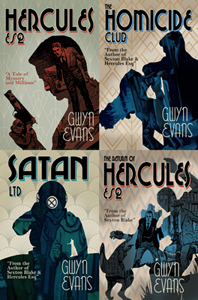
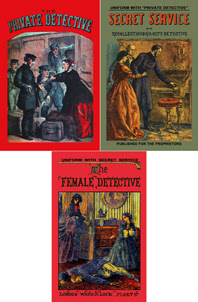



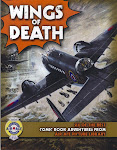

















































.jpg)









